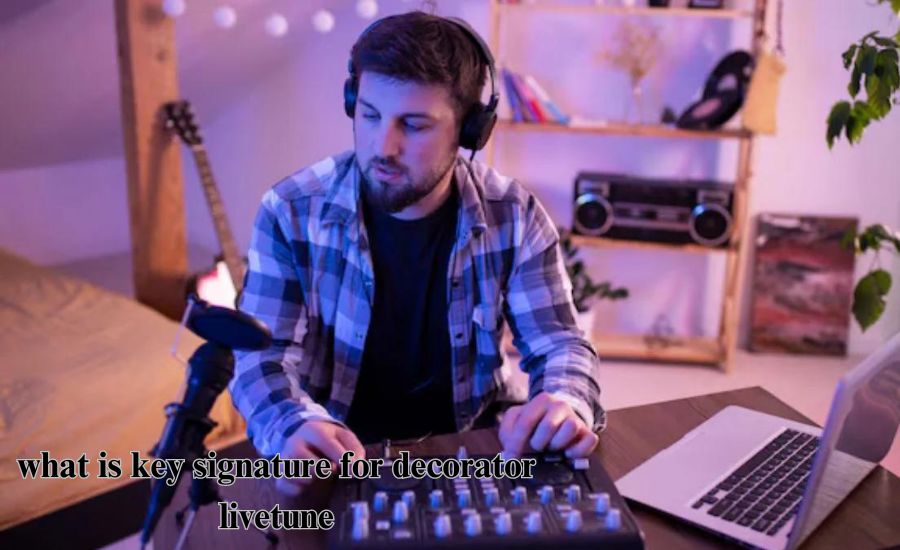What is key signature for Decorator LiveTune? It’s an important part of making music that helps you understand which notes to play. A key signature tells musicians which notes are sharp or flat, and this makes it easier for everyone to play together. When you know the key signature, you can create beautiful melodies and fun sounds!
In the world of Decorator LiveTune, knowing the key signature can really change how your music feels. It’s like having a special map that guides you on your musical journey. Whether you want your song to feel happy or sad, the key signature helps set the mood!
What Is Key Signature for Decorator LiveTune? A Simple Explanation
What is key signature for Decorator LiveTune? It is a special way of showing musicians which notes to play. Think of it like a set of rules that helps everyone stay on the same musical path. When musicians know the key signature, they can create lovely sounds together. This makes performances smoother and more fun!
Every piece of music has a key signature at the beginning. This tells you if you will use sharp or flat notes. For example, a piece in C major doesn’t have any sharps or flats. But if you play in D major, you will have two sharps. Knowing these details is important for making music sound great.
The Importance of Key Signature for Decorator LiveTune
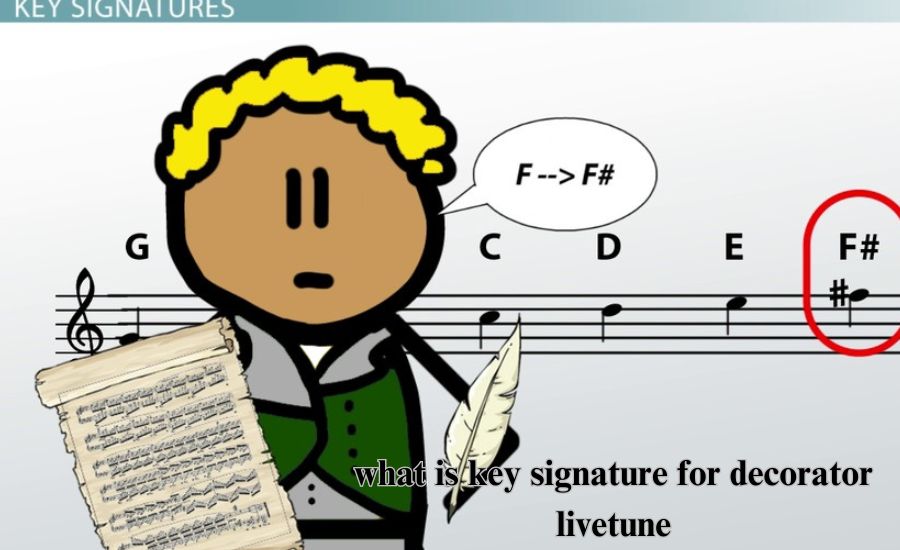
Understanding What is key signature for Decorator LiveTune? is very important. It acts like a guide for all musicians involved. When everyone knows the key signature, they can play together easily. This makes the music sound nice and organized, just like a well-built puzzle.
Moreover, key signatures help set the mood of the music. A major key usually feels happy and bright. On the other hand, a minor key can feel sad or serious. This helps musicians express different feelings through their music.
How to Find the Key Signature for Decorator LiveTune
Finding the key signature in Decorator LiveTune can be simple! First, listen to the music carefully. Try to hear the main note that feels like “home.” This note is usually the key. Next, look for any sharp or flat notes in the music. These notes will help you figure out the key signature quickly.
You can also check the chords being used and understand what is key signature for Decorator LiveTune. The first chord is usually the tonic chord, which tells you a lot about the key. If you see a pattern in the music, it might also give clues about the key signature.
Common Key Signatures Used in Decorator LiveTune
In Decorator LiveTune, some key signatures are used more than others. C major is popular because it’s simple and sounds happy. Many musicians love starting with C major to create uplifting songs. It is like a blank canvas for making beautiful music!
Another common key is G major. What is key signature for Decorator LiveTune has one sharp, making it a bit richer in sound. Many musicians enjoy using G major for energetic pieces. D minor is also popular when musicians want to express deeper feelings. Each key brings a special flavor to the music!
Fun Tips for Using Key Signature in Decorator LiveTune
Using key signatures can be exciting! One fun tip is to experiment with different keys. Changing the key can make your music feel completely different. For instance, moving from C major to A minor can shift the mood from happy to sad. This lets you explore many musical emotions.
You can also try combining different key signatures in one piece. This adds surprises for listeners and keeps the music fresh. Remember to keep an open mind and listen to feedback. Sometimes, others can help you see your music in new ways and tell you what is key signature for Decorator LiveTune?!
How Key Signature Affects Your Music in Decorator LiveTune
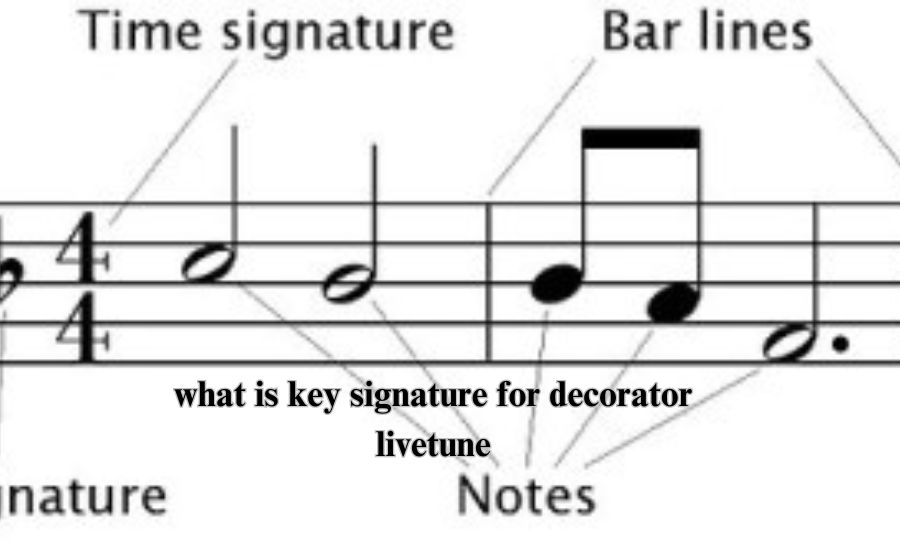
What is key signature for Decorator LiveTune plays a big role in how your music sounds. It influences the notes you choose and the feelings you express. For example, using a major key might make you want to play fast and joyful melodies. Meanwhile, a minor key can inspire slow and soft tunes.
Additionally, the key signature helps musicians stay in sync. When everyone plays in the same key, the music sounds much better. This teamwork is essential, especially during live performances. Everyone can shine together and create magical moments on stage!
Exploring Different Key Signatures for Decorator LiveTune
Exploring different key signatures can be a fun adventure! You might start with familiar keys like C major and G major. Then, you can challenge yourself by trying keys with more sharps or flats. What is key signature for Decorator LiveTune has its own personality and will change how your music feels.
Don’t be afraid to go outside your comfort zone. Trying new key signatures can inspire fresh ideas and spark creativity. You might discover a hidden gem that becomes your favorite sound. Keep experimenting and enjoy the journey of musical discovery!
Summary: What Is Key Signature for Decorator LiveTune and Why It Matters
In summary, understanding What is key signature for Decorator LiveTune? making great music. It provides structure and helps express emotions. Knowing What is key signature for Decorator LiveTune can improve how musicians play together and enhance live performances.
As you explore key signatures, remember to have fun! Experimenting with different keys will make your music unique. Every piece you create can tell a story, and the key signature is an important part of that story. Embrace the joy of music and let your creativity flow!
How to Change Key Signatures in Decorator LiveTune
Changing key signatures in Decorator LiveTune can be an exciting way to refresh your music. To start, make sure you know the current key signature of your piece. This knowledge helps you smoothly transition to a new key. It’s like switching paths on a fun adventure!
Next, decide on the new key you want to use. You can choose a key that matches the mood you want to create. For instance, if your piece is in a happy major key, you might switch to a more serious minor key. This change can dramatically alter how your music feels!
Finally, practice playing your piece in the new key. Make sure to adjust the notes and chords as needed. This practice helps you maintain harmony and ensures that the music flows well in its new form. Enjoy the process of exploring different sounds!
The Emotional Impact of Key Signature for Decorator LiveTune
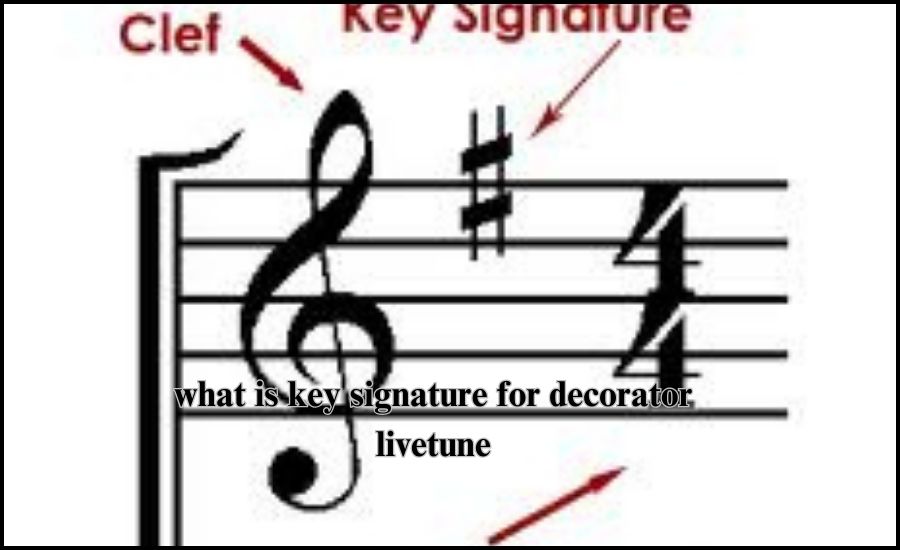
The key signature plays a big role in shaping the emotions of your music. Each key has its own unique feel. For example, major keys often sound bright and happy, while minor keys can feel sad or serious. This emotional quality is important for connecting with your listeners.
When you choose a key signature, think about the feelings you want to express. Do you want your audience to feel joyful, nostalgic, or reflective? Selecting the right key helps you convey those emotions effectively. This connection makes your music more powerful!
Also, experimenting What is key signature for Decorator LiveTune can lead to unexpected emotional responses. You might find that a key you didn’t expect creates a strong feeling in your music. Keep exploring to discover how different keys can enhance your creative expression!
Advantages of Knowing Key Signature for Decorator LiveTune
Knowing the key signature for What is key signature for Decorator LiveTune? comes with many advantages. First, it gives you a clear roadmap for your music. This structure helps you create coherent melodies and harmonies that sound pleasing. Musicians can collaborate more easily when everyone understands the key!
Second, knowing the key signature can enhance your improvisation skills. It provides a framework for spontaneous playing, allowing you to stay in tune while exploring new ideas. This is especially useful during live performances where flexibility is key!
Finally, understanding key signatures can deepen your overall musical knowledge. You learn how different keys affect your music, which helps you grow as a musician. This knowledge not only makes you a better creator but also enriches your appreciation for music.
Disadvantages of Strictly Following Key Signature for Decorator LiveTune
While key signatures are helpful, strictly following them can have its downsides. One disadvantage is that it might limit your creativity. Some musicians feel restricted by traditional structures, making their music sound repetitive or unoriginal. Breaking free from these rules can sometimes lead to more exciting results!
Another concern is that beginners might find navigating key signatures overwhelming. Learning the different keys and their effects can take time. For new musicians, this complexity might make it harder to enjoy the creative process.
Lastly, sticking too closely to a key signature can lead to missed opportunities for exploration. Sometimes, playing outside the expected notes can create unique sounds and feelings. Finding a balance between structure and freedom is important for true artistic expression!
You Should Know: Laglobalbae
How Key Signature Guides Group Play in Decorator LiveTune
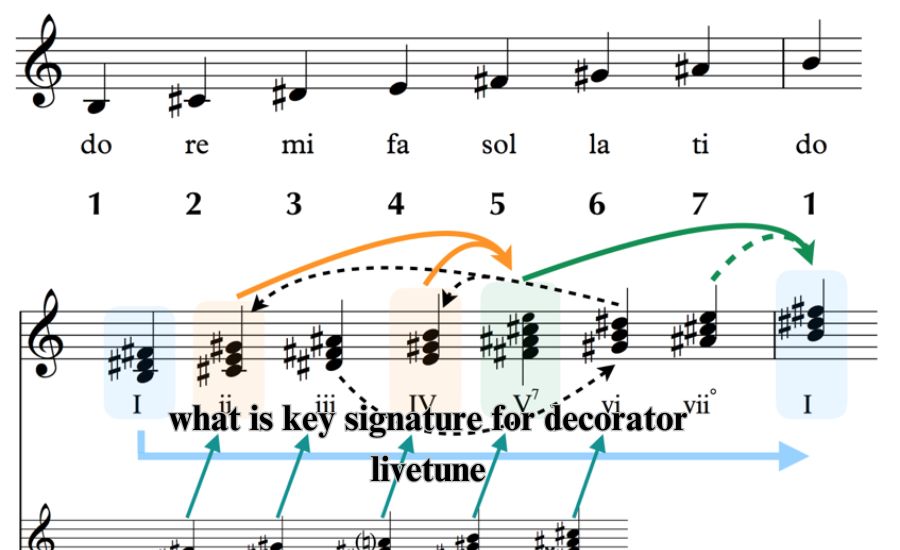
Key signatures are essential for group play in Decorator LiveTune. When musicians perform together, everyone needs to be in the same key. This ensures that all instruments and voices blend harmoniously. It’s like a team working together to achieve a common goal!
During rehearsals, make sure everyone knows the key signature. This clarity helps musicians stay on the same page and fosters teamwork. When everyone plays in sync, the music sounds much better, creating a more enjoyable experience for everyone involved.
Additionally, if one musician changes their key, it’s important for others to follow suit. This flexibility allows for improvisation and keeps the performance lively. Remember, teamwork is key to making beautiful music together!
Creative Ways to Experiment with Key Signature in Decorator LiveTune
Experimenting with key signatures can spark creativity in your music! One way to do this is by switching keys within the same piece. This technique adds surprises and keeps your listeners engaged. Try moving from a major key to a minor key for an unexpected twist.
Another fun method is to layer different key signatures. You can create a rich sound by having some instruments play in one key while others play in another. This layering can produce interesting harmonies and textures in your music.
Don’t be afraid to explore unconventional keys, too. Trying out less common key signatures can lead to unique musical ideas. You might discover a sound that feels fresh and exciting, adding a new dimension to your work!
Tips for Collaborating with Key Signatures in Decorator LiveTune
Collaborating with others in Decorator LiveTune can be a great experience! First, communicate clearly about the key signature you are using. Sharing this information ensures everyone is on the same page. Clear communication helps avoid confusion during rehearsals and performances.
Next, be open to suggestions from your collaborators. They may have ideas for different key signatures that can enhance your music. Listening to their feedback can lead to creative breakthroughs that improve the overall sound.
Lastly, practice together regularly. Playing in sync allows everyone to get comfortable with the chosen key. This teamwork builds confidence and strengthens your musical connection. Enjoy the journey of making music together!
Conclusion
In conclusion, understanding What is key signature for Decorator LiveTune? is super important for making great music. They help you know which notes to play and how to create different feelings in your songs. When you and your friends know the key signature, it makes playing together much more fun and smooth. This teamwork helps everyone sound their best!
Remember, experimenting with key signatures can lead to exciting discoveries! Don’t be afraid to try new keys or mix them up in your music. Each key can tell a different story and bring out unique emotions. So, keep exploring and enjoy the amazing journey of making music with key signatures!
Get More Info: Moviee07.VIP
FAQs
Q: What is key signature for Decorator LiveTune??
A: A key signature is a set of sharp or flat symbols at the beginning of a music staff that indicates which notes to play consistently throughout the piece.
Q: Why is the key signature important for Decorator LiveTune?
A: The key signature guides musicians on which notes to use, helping them stay in harmony and improving the overall sound during live performances.
Q: Can I change the key signature while performing?
A: Yes, you can change the key signature mid-performance in Decorator LiveTune, allowing for real-time adaptation to the music and audience.
Q: How do I find the key signature of a piece?
A: Listen for the main note or chord, check for any sharp or flat notes, and analyze the chords used to identify the key signature.
Q: What emotional effects do different key signatures have?
A: Major key signatures often sound happy and bright, while minor key signatures can feel sad or serious, helping convey different emotions in music.
Q: Is it okay to use unconventional key signatures?
A: Absolutely! Experimenting with unconventional key signatures can lead to unique sounds and creative ideas, making your music more interesting.
Q: How can key signatures help with group performances?
A: Key signatures ensure that all musicians play in the same key, promoting harmony and coordination, which makes group performances sound better.
Q: What are some common key signatures used in Decorator LiveTune?
A: Common key signatures include C major, G major, D minor, and F major, each bringing its own unique feel to the music.
